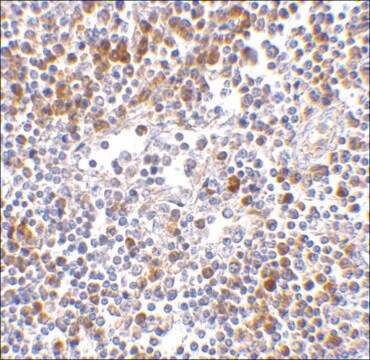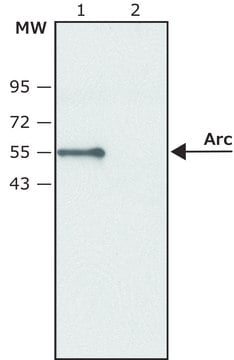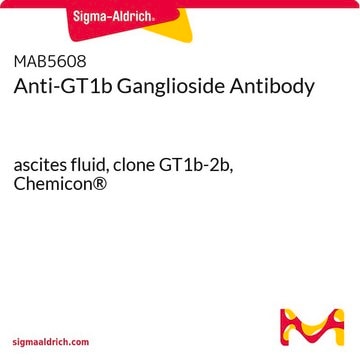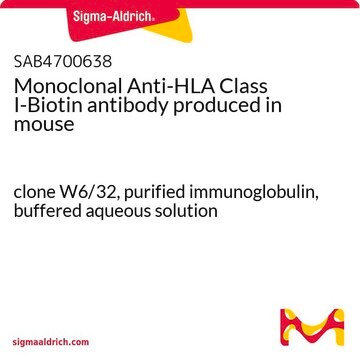ABF210
Anti-MDA5 Antibody
from rabbit, purified by affinity chromatography
Sinônimo(s):
MDA5 Antibody, Melanoma differentiation-associated protein 5, Interferon-induced with helicase C domain protein 1, IFIH1
About This Item
Produtos recomendados
fonte biológica
rabbit
Nível de qualidade
forma do anticorpo
affinity isolated antibody
tipo de produto de anticorpo
primary antibodies
clone
polyclonal
purificado por
affinity chromatography
reatividade de espécies
human
técnica(s)
immunofluorescence: suitable
immunohistochemistry: suitable (paraffin)
western blot: suitable
nº de adesão UniProt
Condições de expedição
wet ice
modificação pós-traducional do alvo
unmodified
Informações sobre genes
human ... IFIH1(64135)
Descrição geral
Especificidade
Imunogênio
Aplicação
Immunofluorescence Analysis: 20 μg/mL from a representative lot detected MDA5 in human lymph node cells.
Inflammation & Immunology
Immunoglobulins & Immunology
Qualidade
Western Blotting Analysis: 2 µg/mL of this antibody detected MDA5 in 15 µg of Daudi cell lysate.
Descrição-alvo
Ligação
forma física
Armazenamento e estabilidade
Nota de análise
Daudi cell Lysate
Outras notas
Exoneração de responsabilidade
Not finding the right product?
Try our Ferramenta de seleção de produtos.
Código de classe de armazenamento
12 - Non Combustible Liquids
Classe de risco de água (WGK)
WGK 2
Ponto de fulgor (°F)
Not applicable
Ponto de fulgor (°C)
Not applicable
Certificados de análise (COA)
Busque Certificados de análise (COA) digitando o Número do Lote do produto. Os números de lote e remessa podem ser encontrados no rótulo de um produto após a palavra “Lot” ou “Batch”.
Já possui este produto?
Encontre a documentação dos produtos que você adquiriu recentemente na biblioteca de documentos.
Nossa equipe de cientistas tem experiência em todas as áreas de pesquisa, incluindo Life Sciences, ciência de materiais, síntese química, cromatografia, química analítica e muitas outras.
Entre em contato com a assistência técnica






![3-(3-((7-(tert-Butoxycarbonyl)-7-azaspiro[3.5]nonan-2-yl)oxy)piperidin-1-yl)propanoic acid](/deepweb/assets/sigmaaldrich/product/structures/260/697/2527aa6d-8353-4697-aa99-0de8f5b6eae9/640/2527aa6d-8353-4697-aa99-0de8f5b6eae9.png)
